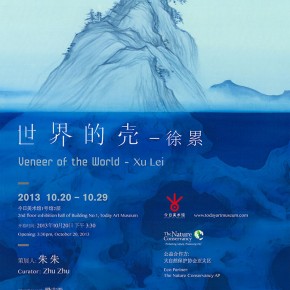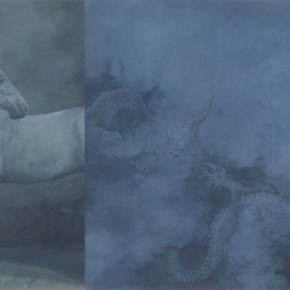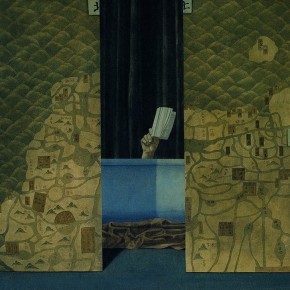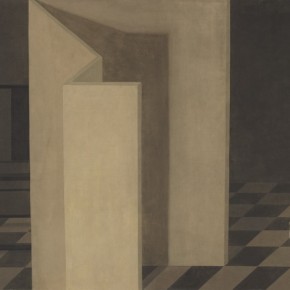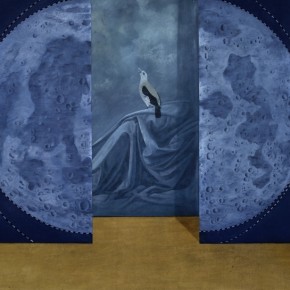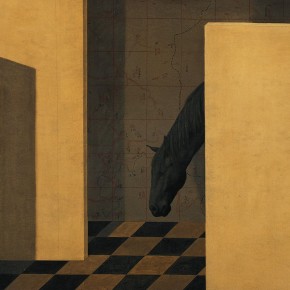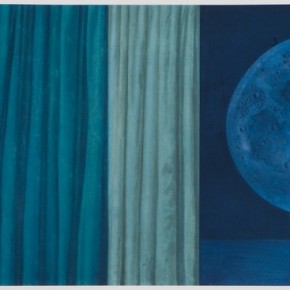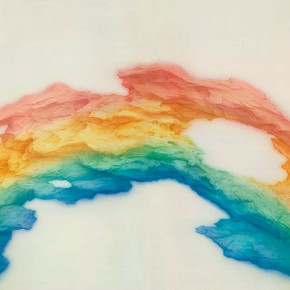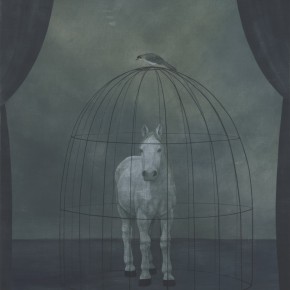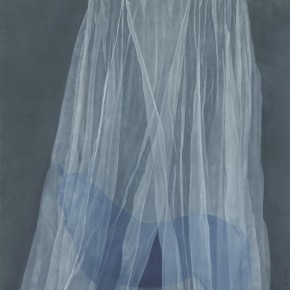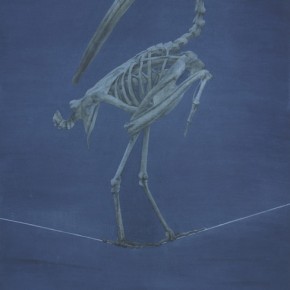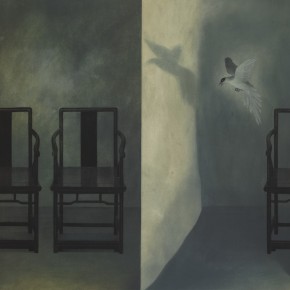Xu Lei
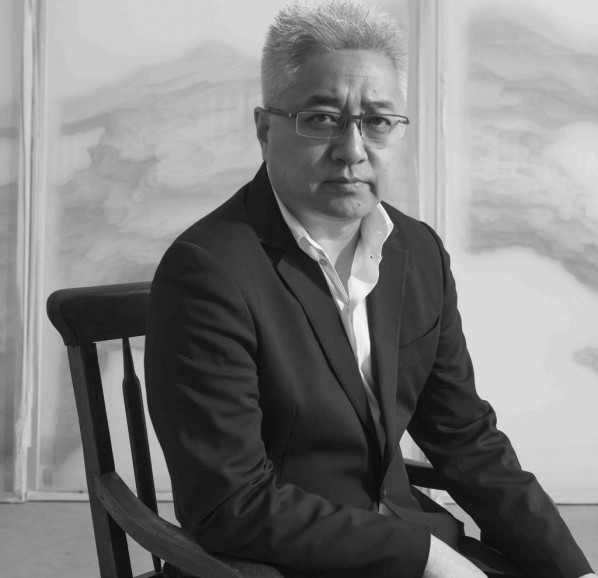
Quoted from "Departure and Distancing: Avant-Garde Reflection in Xu Lei’s Painting" by Pi Li.
Biography of Xu Lei
1963 Born in Nantong, Jiangsu Province
1984 Graduated from the Fine Arts Department of Nanjing University of the Arts
Currently at the China Academy of Arts, Editor-in-chief of “Classics”
Exhibitions
2013
Veneer of the World – Xu Lei, Today Art Museum, Beijing Lightness – One Clue and Six Faces, Hive Center for Contemporary Art, Beijing Image/Illusion – Contemporary Chinese Art Series I, Hive Center for Contemporary Art, Beijing Ink, Sotheby’s, New York Logic of Ink Painting, XianShi Space, Beijing He Huan Wei Zhen: The Fable of Image – Chinese Contemporary Gongbi Invitational Exhibition, InkJ gallery, Nanjing2012
Sanfanjiuran – New Gongbi Painting Invitational Exhibition, Shanghai Museum, Shanghai Chinese Literati Art Exhibition, ACAW, Fuller Center, New York The Revive of Tradition – Contemporary Art Exhibition, London International Book Fair, London The Original Form of Ink, Sanchuan Modern Art Museum, Nanjing Chinese Shangshi Ink Painting Exhibition, Asian Art Week in London, MD FLACKS Gallery Through All Ages – Long Museum Opening Series Exhibition, Long Museum, Shanghai Weary and Extend – Start From Nanjing, Sanchuan Modern Art Museum, Nanjing2011
Future Pass – From Asia to the World Touring Exhibition, Venice, Italy 2011 Chengdu Biennale, Chengdu, China Luna en el espejo – Xu Lei’s Solo Exhibition, Kwai Fung Hin Art Gallery, Hong Kong Solo Exhibition of Xu Lei, Asia House & Goedhuis Gallery, London, UK2010
Silent Voices: Ink Paintings by Xu Lei, Mee-seen Loong Fine Art LLC; Joan B Mirviss LTD, New York Reshaping History China Art from 2000 to 2010, Beijing National Convention Center, Beijing Pavition of China at The 12th International Architecture Exhibition, La Biennale di Venezia2009
The Living Chinese Garden, The Old State House of Brussels, Brussels2008
Xu Lei: Revivification of the Tradition, Asian Division of the Library of Congress, Washington Illution/ Nature – The New Direction of Chinese Gongbi, Beijing Art Academies Gallery, Beijing Case Studies of Artists in Art History and Art Criticism, SZ Art Center, Beijing Zeichen im Wandel der Zeit: Chinesische Tuschemalerei der Gegenwart, Staatlichen Museen zu Berlin; Staatlichen Kunstsammlungen Dresden New Age – The Road of Chinese Painting, National Art Museum of China, Beijing Zhifu: The Extention of Medium, Tang Contemporary Art, Hongkong2007
What’s Next – Chinese Contemporary Art Exhibition, Hong Kong City Hall, Hongkong Sensitivity – Memory form: Twelve Artists’ Works, Dimensions Art Center, Beijing Rotation, Nanjing Qinghe Contemporary Art Center, Nanjing2006
South-east China, Group Exhibition of Hong Lei, Tang Guo and Xu Lei, Beijing TS1 Contemporary Art Center, Beijing Poetic Reality: A Reinterpretation of Jiangnan, RCM Gallery, Nanjing The New Classic Five People Exhibition, Sun Yat Sen Memorial House, Taipei Group Exhibition of Zhu Wei, Xu Lei and Peng Wei, Season Gallery, Beijing Qi Cheng Zhuan He, Jiangsu Province Art Museum, Jiangsu Make Up – Chinese Opera Art Exhibition, Today Art Museum / Zhuqizhan Art Museum, Beijing / Shanghai Beyond Temporality: Presentation of Photography According to Contemporary Art Approach, Ping Yao Conspire, Beijing TS1 Contemporary Art Center, Beijing Pele da cidade: Imagens of Metropole Contemporanea, Galeria Tap Seac of Macau / Shenzhen Museum of Art, Shenzhen / MaCAU Art Nova of Gongbi Group Exhibition, Nanjing Dajia Gallery, Nanjing2004
One to One: Photographs from China, Chambers Fine Art, New York Photographs from Nanjing, Nanjing Art Museum, Nanjing Dragon’s Nation: Contemporary Art of China, Irish Museum of Modern Art, Irish The First Nominative Exhibition of Fine Arts Literature, Wuhan2003
The Different Same: Contemporary Art Exchange Exhibition, Shanghai Duolun Museum of Modern Art, Shanghai2002
Behind the Reality Other Modernity, Dimensions Art Center, Taipei Paper / Colour, TaiKang Art Museum, Shanghai Beauty through Silk Screen: Original Contemporary Engraving Printing Exhibition, Today Gallery, Beijing2001
The Conversation With Chagall: Dimen Thematic Art Exhibition, Art ShangHai, ShangHai Exhibition of Chinese Ink & Wash Paintings, Edinburgh Contemporary Silk-screen by Chinese Artists, Dynasty Art Group, Taipei2000
Exhibition of 5000 Years of Chinese Art and Civilization, Guggenheim Museum, Bilbao Exhibition of Shanghai Art Museum’s Collection, Shanghai Art Museum, Shanghai Neo-Ink Paintings, Liuhaisu Art Museum / Jiangsu Province Art Museum, Shanghai / Jiangsu New Frontier-New Vision, Haishangshan Art Center, Shanghai Chinese Contemporary Ink paintings and Sculpture, Pierre Cardin Center,Paris Illusions: Xu Lei’s Art Exhibition, Keyi Gallery, Nanjing1998
Exhibition of 5000 Years Of Chinese Art and Civilization, Guggenheim Museum, New York New Voices: Contemporary Art Dialogue Among Taipei, Hong Kong Arts Centre / Dimensions Art Center, Hong kong / Taipei 5 Chinese Artists, Arte Nel Castello, Torino1997
Xu Lei’s New Work, Browse / Darby Gallery, London1996
Chinese Contemporary Art, International Art Garden Museum, Beijing The Art Show of Eight Artist From China, Browse & Darby Gallery, London The International Asian Art Fair, New York1995
The Mystery of Absence: Xu Lei’s Art Exhibition, Alisan Fine Arts, Hong Kong Walasse Ting & Xu Lei – The International Fine Art and Antiques for Asia, Singapore Solo Exhibition of Xu Lei, Jiangsu Art Museum, Jiangsu1991
Xu Lei ’s Painting Exhibition, Cultural Office of the Italian Embassy, Beijing The Practical Art of Paper, Shanghai Library, Shanghai1989
China / Avant-Garde, National Art Museum of China, Beijing1987
Journey of Life: Painting Exhibition Act Two, Nanjing Publication Building, Nanjing1986
Journey of Life: Painting Exhibition Act One, Museum of Nanjing University of the Arts, Nanjing1985
Jiangsu Art Week of Youth / Great Exhibition of Contemporary Art, Jiangsu Provincial Art Museum, Nanjing
1984
The sixth National Fine Arts Exhibition, National Art Museum of China, BeijingCourtesy of Xu Lei.



